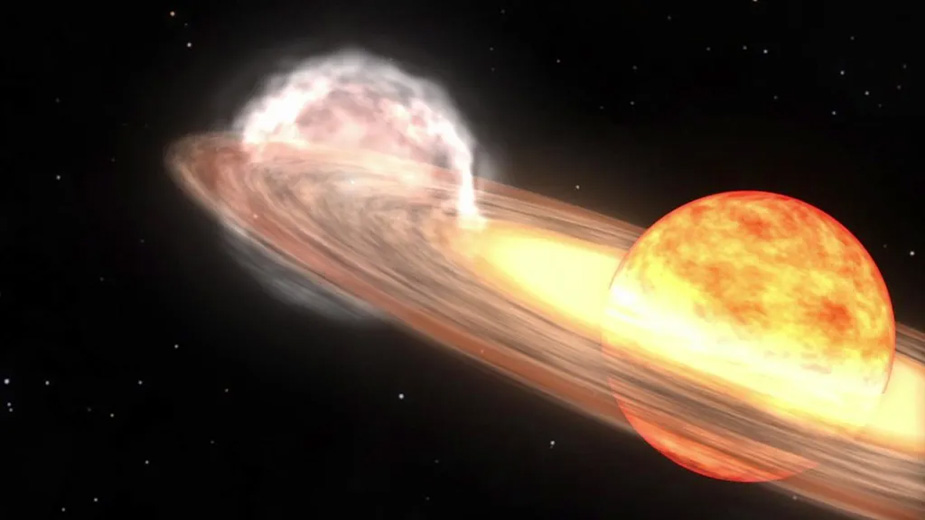Once-in-a-lifetime Astronomical Occurrence Expected This Summer
YOUNGSTOWN, Ohio – Skywatchers have another opportunity to witness a once-in-a-lifetime event this summer, although it won’t rival April’s total solar eclipse.
“Nova means new star,” said Patrick Durrell, Youngstown State University physics and astronomy professor. “Basically, it’s a type of star – they call it a white dwarf. Usually it’s orbiting another star,” a red giant.
The red giant becomes unstable due to increasing pressure and temperature and sheds its outer layers. The white dwarf collects it, ultimately causing a thermonuclear reaction, according to a February blog post by Lauren Perkins at the National Aeronautics and Space Administration’s Marshall Space Flight Center.
“The whole system brightens up by a few thousand, but it’s different than a supernova,” Durrell explained. “A supernova is when a star cataclysmically explodes.”
A nova is much brighter. Unlike a supernova, though, the white dwarf star remains.
“Most novae don’t recur,” Durrell said.
But this one is a special subclass called a recurrent nova, and there are only about 10 known in the milky way.
“This one is one of the most famous ones called T Corona Borealis,” he said.
A presentation by Krishna Mukherjee, an assistant professor of physics and engineering at Slippery Rock University, said astronomers have observed the T Corona Borealis explosion every 80 years.
“The star briefly brightens up from 10 magnitude to 2.2 magnitude,” said the presentation, which Mukherjee delivers to her students.
The last time one occurred was in 1946. Normally, people can’t see this star even with binoculars. It’s usually just off a small constellation called the northern crown, Durrell explained.
“So it is once in a lifetime,” he said.
Light caused by the explosion will be visible by the naked eye, Durrell said.
But the exact time can’t be determined. It’s expected to happen sometime between now and September.
Durrell compared the brightness of T Corona Borealis to that of the North Star.
“So the northern crown would get another jewel for a few days,” he said.
The NASA blog previewed the event.
“Once its brightness peaks, it should be visible to the unaided eye for several days and just over a week with binoculars before it dims again, possibly for another 80 years,” it said.
Still, people will have to be looking for it to see it.
“But it will be bright enough that you can see it from suburban skies,” Durrell said.
It presents an opportunity for people to study what occurs when such an explosion happens, something that’s fairly rare.
“It’s tough to study things that explode, because most of the time we can’t predict them,” Durrell said.
Since the last time it occurred, technology has improved with better telescopes, including the Hubble and James Webb telescopes, to study it.
“From that standpoint, yes, it’s very, very interesting,” Durrell said.
At its peak, it could be in the top 50 brightest stars in the sky, he said.
This has been a year full of astronomical phenomena visible in the Mahoning Valley, starting with the total solar eclipse followed by the appearance of the aurora borealis. T Corona Borealis is the latest, although it will be visible across the world.
The recurrent nova won’t have the same jaw-dropping effect as either the eclipse or the aurora borealis though, Durrell said. There’s no comparison to seeing the total eclipse, he said.
“To me, it’s just a reminder that the universe is always doing cool things,” Durrell said.
Pictured at top: A red giant star and white dwarf orbit each other in this rendering of a nova similar to T Coronae Borealis. (NASA)
Copyright 2024 The Business Journal, Youngstown, Ohio.



